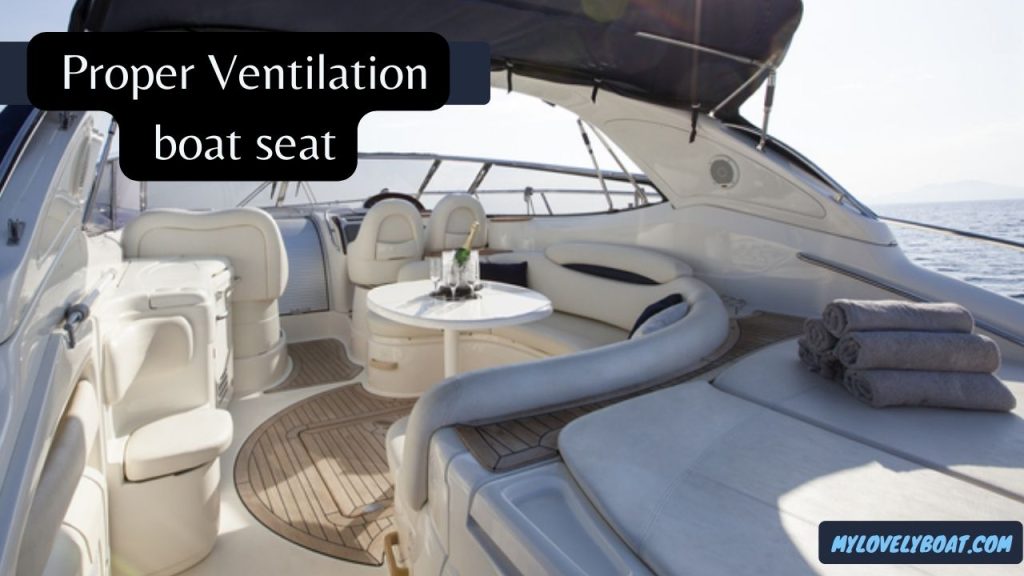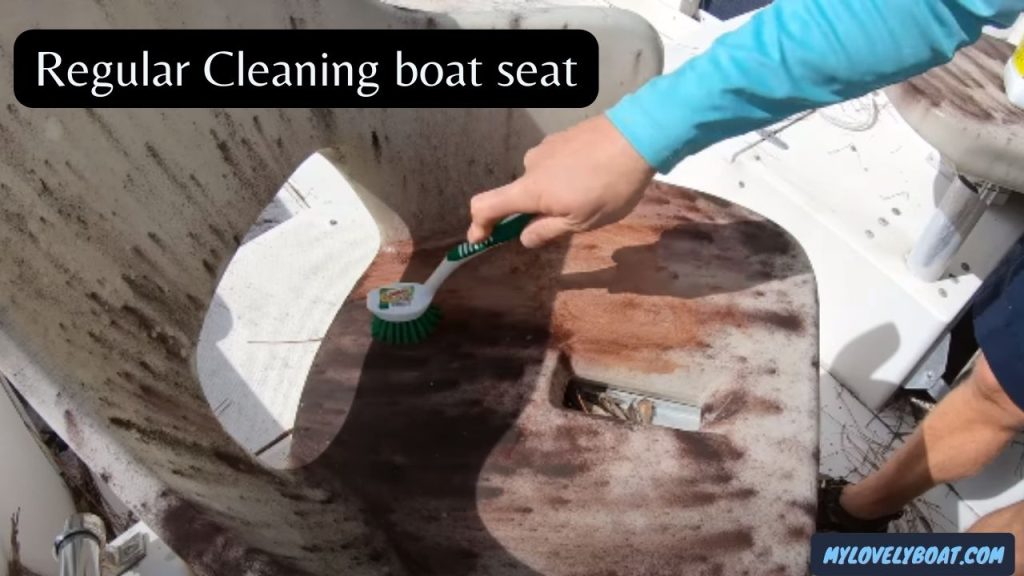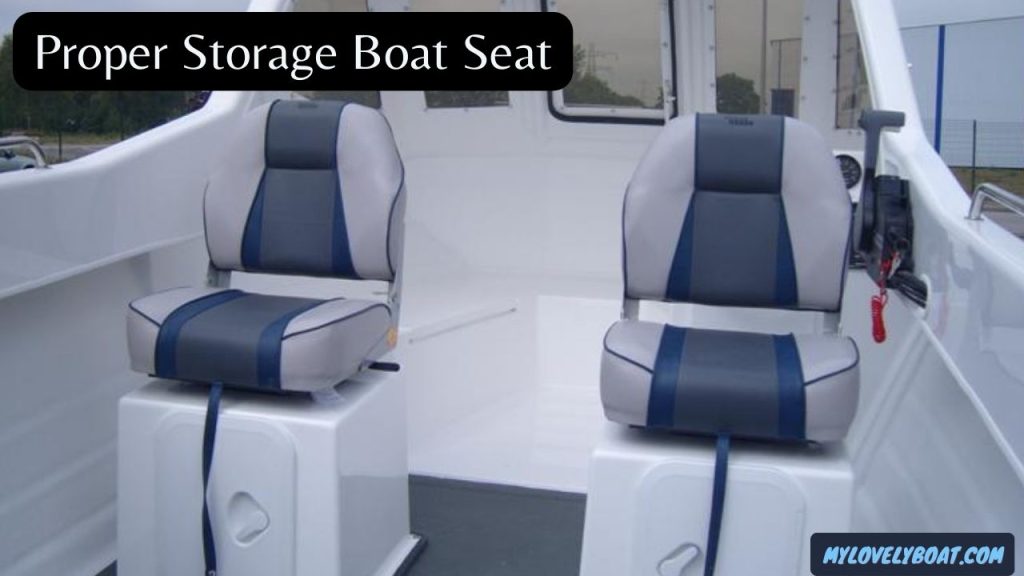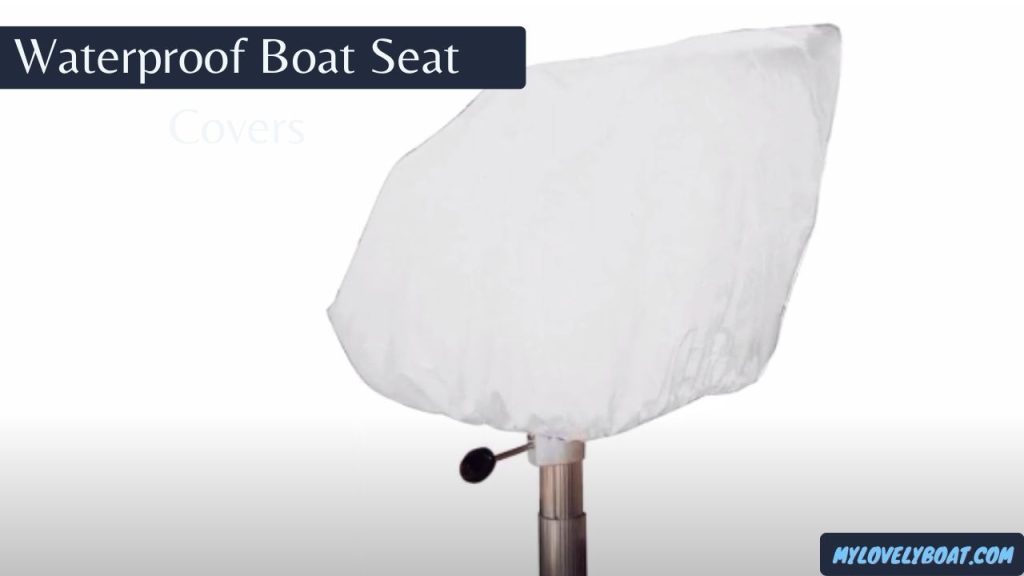Why You Can Trust: We are dedicated to providing our readers with the most comprehensive, expert advice on a wide range of products. If you buy through our links, we may get a commission.
Boat owners know that keeping their vessels in top condition is essential to ensure a safe and enjoyable experience on the water.
One common issue boat owners face is mildew and mold growth on boat seats. Not only can this be unsightly, but it can also cause health problems and damage to the seats.
This comprehensive guide will explore 8 ways to prevent mildew and mold growth on boat seats, ensuring that your boat remains clean, safe, and comfortable for all aboard.
why it’s important to prevent mold and mildew growth on boat seats
Maintaining a clean and comfortable boating environment is essential for boat owners, and preventing mold and mildew growth on boat seats is crucial. Mold and mildew can cause various issues that affect the overall boating experience. Here are some reasons why it’s important to prevent mold and mildew growth on boat seats:
- Health concerns: Mold and mildew can cause respiratory issues and allergies, posing a risk to the health of those on board.
- Seat damage: Mold and mildew can weaken and deteriorate the upholstery materials, leading to costly repairs or replacements.
- Aesthetic appeal: Unsightly mold and mildew stains can reduce your boat’s overall appearance and value.
- Comfort: Mold and mildew can produce unpleasant odors and create an uncomfortable environment for passengers.
- Boat value: Preventing mold and mildew growth helps maintain the overall condition of your boat, which can positively impact its resale value.
Here Are The 8 Ways to Prevent Mildew and Mold Growth on Your Boat Seats
1 – Proper Ventilation

Proper ventilation is crucial to maintaining a clean and healthy boat environment. Failure to have adequate airflow can create conditions ideal for mold and mildew growth, damaging your boat and posing a health risk to you and your passengers. To help prevent mold and mildew from developing on your boat seats, consider implementing the following best practices:
- Keep doors, windows, and hatches open: These simple actions can help fresh air circulate and dry out your boat’s interior.
- Install vents or fans in troublesome areas: Consider adding vents or fans to storage compartments or cabins that tend to become damp. Invest in dehumidifiers to help control moisture in enclosed spaces.
- Dry out your gear before storing it: Ensure it is thoroughly dry before storing any wet gear or clothing on your boat. This will help prevent excess moisture from being introduced into your boat’s interior.
2 – Regular Cleaning

Regular cleaning of boat seats is crucial to prevent the growth of mold and mildew caused by an accumulation of dirt, debris, and moisture on the upholstery. Adopting an effective cleaning practice is important to ensure that your boat seats remain clean and free from mold and mildew. The following steps will guide you:
- Use the Right Cleaner: Select a gentle, non-abrasive cleaner specifically designed for marine upholstery to avoid damaging the seats.
- Scrub with Care: Use a soft-bristle brush to gently scrub the seats and remove any dirt and debris without causing any harm to the upholstery.
- Thoroughly Rinse and Air Dry: After cleaning, rinse the seats thoroughly with fresh water and allow them to air dry completely before using or storing them to prevent moisture buildup.
Here are the top 5 boat seat cleaning products to effectively clean your boat seats:
- Star Brite Boat Seat Cleaner: Highly effective and widely recommended by boat owners, this cleaner removes dirt and stains from boat seats without causing any harm to the upholstery.
- 303 Marine Upholstery Cleaner: This gentle cleaner is perfect for removing dirt and salt residue from boat seats and restoring their shine.
- Meguiar’s Marine Vinyl and Rubber Cleaner: This cleaner is formulated to remove stubborn stains and protect the boat seats against UV damage.
- Boat Bling Hot Sauce: This boat seat cleaner is ideal for removing mildew, dirt, and grime from seats, and it’s safe to use on all marine surfaces.
3 – Use of Mold and Mildew Resistant Materials
Regarding boat seats, one of the best ways to prevent the growth of mold and mildew is to choose materials resistant to these issues. Here are some tips to keep in mind when choosing the right materials for your boat seats:
- Marine-grade vinyl: Look for vinyl specifically designed for marine environments, as it is better equipped to resist mold and mildew growth.
- Other resistant materials: Some other materials, such as canvas or solution-dyed acrylics, can also be used as they naturally resist mold and mildew growth.
- Mold and mildew-resistant thread: Use specially designed thread that is resistant to the growth of mold and mildew for all sewing or repairing of your boat seats.
4 – Borax Treatment
Boat seats are prone to mold and mildew growth due to the dampness and humidity they are exposed to. Fortunately, there is a natural solution to keep your seats clean and fresh – borax treatment.
Borax, a natural mineral, creates an inhospitable environment for mold and mildew. Follow these simple steps to use borax on your boat seats:
- Mix one cup of borax with one gallon of warm water.
- Applying the solution to the seats using a soft-bristle brush, paying extra attention to areas with mold and mildew.
- Allow the solution for a few minutes to ensure maximum effectiveness.
- Rinse the seats thoroughly with fresh water.
- Finally, let the seat air dry completely.
Regular borax treatment can help prevent mold and mildew growth, maintaining the cleanliness and longevity of your boat seats. Remember to follow safety precautions when handling borax and keep it out of reach of children and pets.
5 – Bleach-Free Mold and Mildew Stain Remover
Mold and mildew can be significant issues when maintaining a boat’s upholstery. Not only can it cause unsightly stains, but it also poses a potential health hazard.
Choosing the right cleaning product to address this problem is essential since bleach can harm marine upholstery. Fortunately, several bleach-free options can eliminate mold and mildew stains effectively.
A mold and mildew stain remover designed for boat seats can help remove existing growth and prevent future occurrences.
It is essential to carefully follow the directions for application and rinsing to ensure the product works effectively and doesn’t cause any damage to your boat’s upholstery.
6 – Proper Storage

Proper storage of your boat seats is essential in preventing the growth of mold and mildew. When your boat is not in use for extended periods, follow these steps to ensure the seats remain free from these damaging and unsightly growths.
- Remove cushions or seat covers and store them in a dry, well-ventilated area. Mold and mildew thrive in damp environments, so it’s important to keep these items in a place where air can circulate freely, and moisture is minimal.
- Utilize a boat cover to protect the seats from moisture and debris. A high-quality boat cover protects your seats from rain, snow, and other water damage. It will also prevent leaves, dirt, and other debris from accumulating, reducing the risk of mold and mildew growth.
- Store the boat in a dry, well-ventilated area. Whether using a dock or storing your boat on land, choose a location that provides adequate ventilation and minimizes moisture buildup. Avoid storing your boat in areas prone to high humidity, such as basements or areas with direct exposure to water.
By following these proper storage practices, you can significantly reduce the likelihood of mold and mildew growth on your boat seats. This preserves their appearance and ensures their longevity, allowing you to enjoy many more seasons on the water with clean and well-maintained seats.
7 – Waterproof Boat Seat Covers

Waterproof boat seat covers can help to protect your seats from moisture, preventing mold and mildew growth. Look for covers made from waterproof, breathable materials that will keep moisture out while allowing air to circulate. Ensure the covers fit securely and cover the entire seat for maximum protection.
When purchasing waterproof boat seat covers, you want to ensure they are compatible with your boat’s specific make and model. Choosing covers that are easy to clean and maintain is also important. With the right covers, you can enjoy your boating adventures without worrying about damaging your seats.
Amazon is a great place to start your search for reliable and effective waterproof boat seat covers. Here are five top-rated covers available on Amazon:
8 – Regular Inspections
Regularly inspecting your boat seats for signs of mold and mildew can help you catch any issues early before they become more significant problems. Check your seats for:
- Discoloration or staining: Check for any spots or discolouration that might suggest that there could be an issue with mold or mildew.
- Musty or moldy odors: If you notice any pungent or unpleasant smells coming from your boat seats, it could be a sign of mold or mildew.
- Damp or wet areas: Any noticeable dampness or wetness could lead to mold and mildew growth if left unchecked.
If you notice signs of mold or mildew, immediately clean and treat the affected area. By being proactive and conducting regular inspections, you can keep your boat seats in excellent condition for years.
What cleaner works best for mildew on a boat seat?
Read More:
- 7 Simple Tips to Protect Your Boat Seats from Bird Droppings
- The Ultimate Guide to Boat Seat Covers: Types, Materials, Benefits, and Maintenance
- 8 Tips for Installing Your Boat Seats Like a Pro
- How to Choose Boat Seats for Your Budget –10 Tips
- How Do I Protect My New Boat Seats? 7 Secret Tips
- The Vinegar Solution: Can it Clean Your Boat Seats?
F A Q-
How can I improve ventilation on my boat to prevent mold and mildew growth?
To improve ventilation on your boat, keep doors, windows, and hatches open whenever possible, install vents or fans in areas prone to mold and mildew growth, and dry out wet gear and clothing before storing them on your boat.
What is the best way to clean boat seats to prevent mold and mildew?
Use a gentle, non-abrasive cleaner designed for marine upholstery, scrub the seats with a soft-bristle brush to remove dirt and debris, and rinse the seats thoroughly with fresh water. Allow the seats to air dry completely before using or storing them.
How can I use borax to prevent mold and mildew growth on boat seats?
Mix one cup of borax with one gallon of warm water, and apply the solution to the seats using a soft-bristle brush, focusing on any areas where mold and mildew are present. Rinse the seats thoroughly with fresh water and let them air dry completely.
What should I do if I find a leak or moisture issue on my boat?
Inspect your boat regularly for signs of leaks, such as water stains or damp areas. Repair any leaks promptly using marine-grade sealants or other appropriate materials. Keep bilge pumps and drains clear and functioning properly to remove excess water from your boat.
How often should I inspect my boat seats for mold and mildew growth?
Regularly inspecting your boat seats for signs of mold and mildew can help you catch any issues early before they become more significant problems. Check your seats for discolouration, staining, musty odours, and damp areas.
What should I do if I find a leak or moisture issue on my boat?
Inspect your boat regularly for signs of leaks, such as water stains or damp areas. Repair any leaks promptly using marine-grade sealants or other appropriate materials. Keep bilge pumps and drains clear and functioning properly to remove excess water from your boat.

I am a freelance writer passionate about watersports and the great outdoors. I have many years of experience in the marine industry, and I enjoy sharing my knowledge and expertise with others so that they can get the most out of their boating experiences. I like fishing, kayaking, and exploring new destinations by boat whenever I have time. Contact Us: Linkedin







